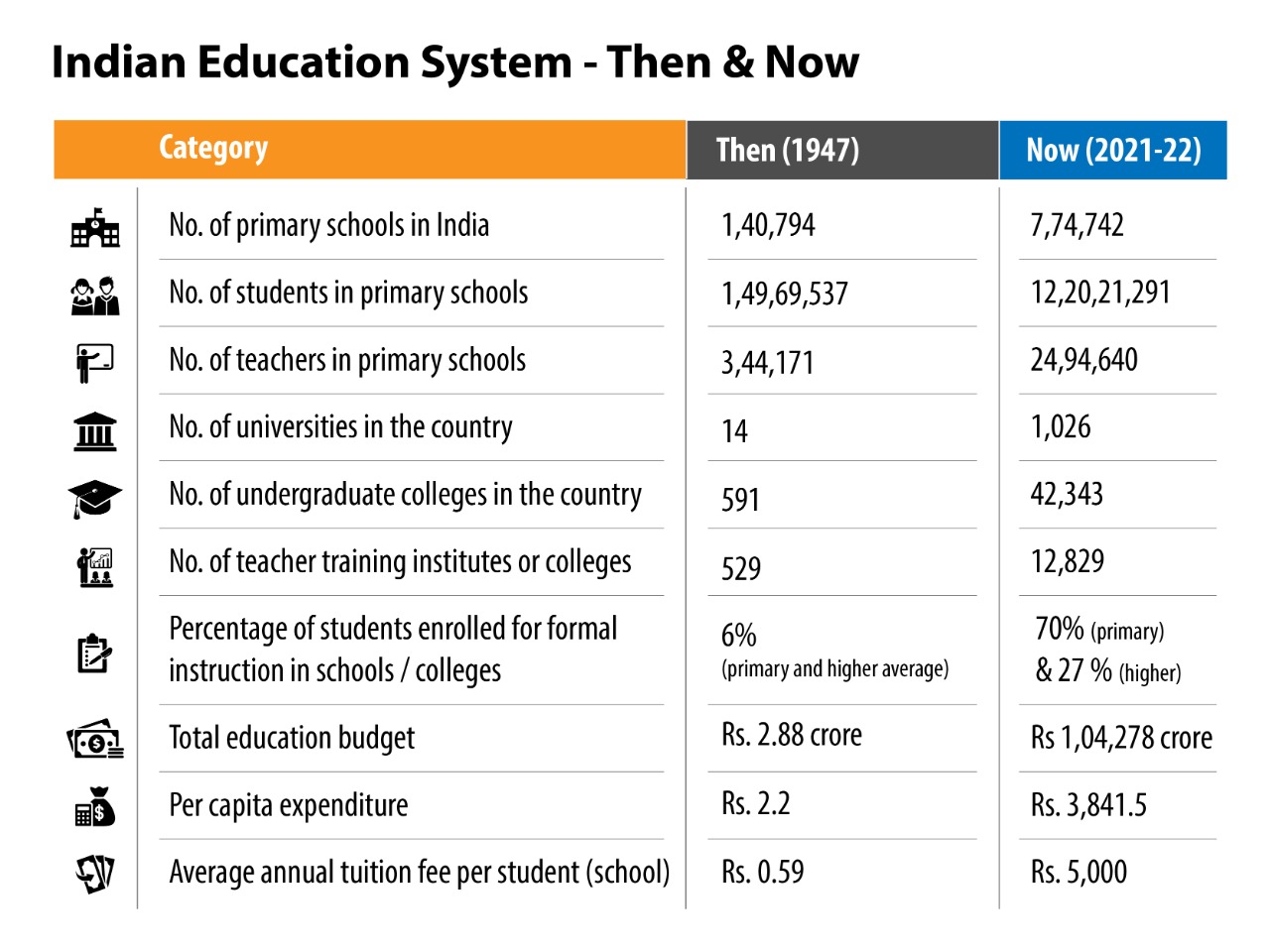Shreyosi Chakraborty and Reshma Ravishanker
Growing from a mere 14 universities in 1947 to 1,026 currently and 140,794 primary schools to 774,742 now, India’s post-independence education system has grown leaps and bounds to emerge as one of the world’s largest education systems with 250 million children in K-12 education and 40 million youth in higher education. Yet simultaneously it is battling several challenges to deliver quality education to all its 450 million children and youth.
This Independence Day as the country is celebrating ‘Azadi Ka Amrit Mahotsav’ to mark 75 years of free India, here’s a look at Indian education in 1947 and in 2022.
In 1950 the government of India appointed the Planning Commission to prepare a blueprint for the development of different aspects of life, including education. Thereafter, successive five-year plans were drawn up.
The main points of action were to achieve universal elementary education, to eradicate illiteracy, establish vocational and skill training programs, upgrade standards and modernize all stages of education, with special emphasis on technical education, science, and environmental education and provide facilities for delivery of high-quality education in every district of the country.
From the 1950s to the ’80s, the number of educational institutions in India tripled. Primary schools, especially, experienced rapid growth because the states gave highest priority to the universalization of elementary education in order to fulfill the constitutional directive of providing universal, free, and compulsory education for all children up to the age of 14.
Independent India battled challenges streamlining its education system. Among them, a high drop out rate with minimal continuation from primary to secondary education — over 50% drop out rate. A large number of schools were understaffed and lacked adequate facilities.
In 1986, a government resolution was passed stating that all children who attained the age of 19 years by 1990 would have five years of formal schooling or its equivalent. Plans were also made to improve and expand adult and non formal systems of education.
On the higher education front, in 1947, the nation had set up 20 universities and 496 colleges. In 1948, the Indian Government established the University Education Commission to oversee the growth and improvement of higher education.
Today, the country is looking at a massive overhaul of its education system with the implementation of the National Education Policy 2020.
The Covid-19 pandemic prompted shift to hybrid learning has redefined education in India, allowing the mushrooming of Ed-tech platforms, digitisation of learning resources and content while the country continues to battle a shortage of teachers in government schools, inadequate infrastructure, and dissatisfactory learning outcomes from primary to higher education.
